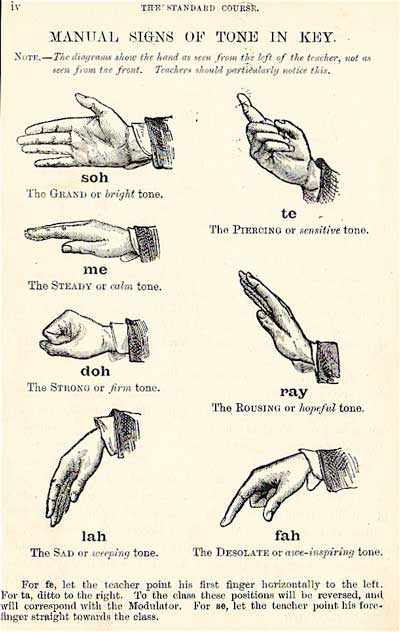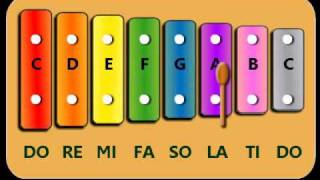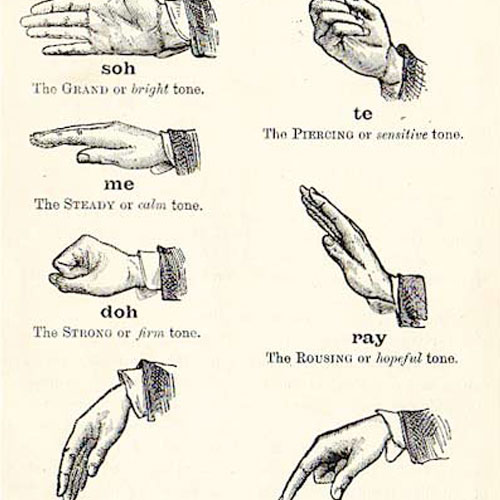In Sessions 1 and 2 of my program of music activities for babies, I show you how to share Solfège (or Do, Re, Mi) with your baby. But unless you have a musical background (beyond a vague recollection of learning Do, Re, Mi during primary school music class) you might be wondering what it is, what it’s for and why and how should you teach it to your baby. I’ll try and answer all of those questions without getting too technical and I’ve included a Solfège chart. But first, have a little watch of this classic clip from The Sound of Music, I love it!

We’ve all heard of Do, Re, Mi thanks to Maria and the Von Trapp children from the Sound of Music… It’s one of those songs you can’t help but sing along to. (Yes you will be thanking me all day for getting that one stuck in your head!) When we think about the purpose and importance of solfège in musical education it is a good idea to keep in mind the wise words of Maria “ When you know the notes to sing…you can sing most anything!”
What is Solfège?
Solfège (or Do-Re-Mi) is like the alphabet for music – just as the ABC’s provide the building blocks for reading, solfège provides the building blocks for musical education. It is one of the most widely known and popular systems of teaching pitch, which brings together listening, singing and in due course, playing music. Each note of the musical scale is given a different syllable – Do, Re, Mi, Fa, So, La and Ti. With their open vowel endings, the solfège names are much easier to vocalise than traditional 8-note scale names: C-D-E-F-G-A-B-C, which have lots of sounds that strain the voice (eeee sounds). What’s more, singing letter names for a musical scale has the potential to confuse young children who are learning the alphabet in the context of language.
What is solfège for?
The idea behind the solfège system is to help develop pitch memory, which is the most basic type of musical memory. It does so by requiring the student to hear the note in their mind’s ear, thus honing their listening and aural skills. Because solfège focuses on the use of voice (rather than an instrument) it is the perfect way for young children to learn pitch naturally.
There are two types of pitch – perfect and relative pitch. Perfect pitch (also called absolute pitch) is the ability to identify or re-create a given musical note without the help of a reference tone. Famous singers with perfect pitch include Michael Jackson, Mariah Carey and Ella Fitzgerald. Relative pitch is the ability to recognize and produce pitches in relation to each other.
There are also two methods of teaching solfège – the ‘fixed do’ system and the ‘movable do’ system. The ‘fixed’ do system is based upon the C major scale and is more in line with building perfect pitch because C is always sung as “Do” and A is always sung as La etc. However, with the Movable-Do solfège system “Do” is sung as the root (first note) of the scale so any scale or key can be used, thus aiding the development of relative pitch.
Whether you use the ‘fixed do’ or ‘‘movable do’, both systems are tools for helping to develop the muscle memory for pitch, especially if you add the Curwen/Glover hand signs.
Learn solfège and much, much more – Join The Bubble Box today and gain access to my 8 session music activities program for babies…
$5/MONTH SUBSCRIPTION TO THE BUBBLE BOX MUSIC PROGRAM
Solfège chart showing the hand signs
During the 1840’s, John Spencer Curwen developed hand signs to go with the solfège syllables (do re mi, etc.) based on Sarah Glover’s Manual of the Norwich Sol-fa System. Later, Hungarian pioneer of children’s music education Zoltán Kodály, adapted the hand signs slightly and integrated them into his teaching methods.

This solfège chart show the hand signs. Hand signs allow children to actually see the height or depth of the pitch. The low “do” begins at your midsection. Each hand sign (pitch) is then made above the previous one. Thus, you have the hand signs going up when the pitch goes up. The upper “do” is at eye level. The reverse is done on the way back down and that’s a little trickier.
Some may say that the hand signs are too hard for babies and toddlers to form (they don’t yet have the fine motor skills) but I would argue that 1) when you do the hand signs for your baby he is receiving a visual cue to help develop his pitch memory and 2) his attempts to do the signs himself practices and helps develop his fine motor skills. If needed, you can even help mould your child’s hand into the do shape until he can sign do himself.
Why teach solfège to your baby?
Here is a quote from Kodály, which sums up why I believe that teaching solfege to your baby is worthwhile…
‘To be most effective, music education must begin with the very young children. It is in his or her early years that a child acquires discrimination in pitch as well as language’ (Kodály cited in Anderson; Lawrence, 2007, p.99).
Solfège provides the foundation for musical education, so why not start as soon as possible? In fact, studies have found that babies are born with perfect pitch. But while a few people retain perfect pitch for the rest of their lives, most lose the talent some time after they are eight months old. Which means that there is a short window of opportunity to maintain your child’s perfect pitch, leading me to the next question…
How do I teach Solfège to my baby?
As Maria also sings “Start at the very beginning, a very good place to start.” I would suggest you keep things simple and start teaching solfège to baby using one key – and as C major has no sharps or flats it’s a good key to start in. That makes C ‘do’ and a D ‘re’ . Using this ‘fixed do’ system to start with may assist in sustaining your child’s perfect pitch, you never know. You can then move on to other keys a little while down the track in order to develop your child’s sense of relative pitch.
Another wonderful way to teach pitch is to play the scale on a color-coded pitched instruments such as a glockenspiel, xylophone or even handbells (which are easy for little hands to use). You play and sing the solfège notes at the same time.

If you would like further guidance you can check out my online program of music activities for babies. I teach you how to sing the solfège scale, do the hand signs and play it on a colour-coded pitched instrument. (For the first time in Session 1 – Activity 10, and then I introduce variations in the other sessions.)
So what do you think? Are you going to give solfège a go with your little one?
References
Anderson, W.M. Lawrence, J.E. (2007), Integrating Music into the Elementary Classroom, Belmont: Clark Baxter
Watson, V. (2012) Everything you need to know about TEACHING YOUR YOUNG CHILD MUSIC, Brillkids


0 Comments